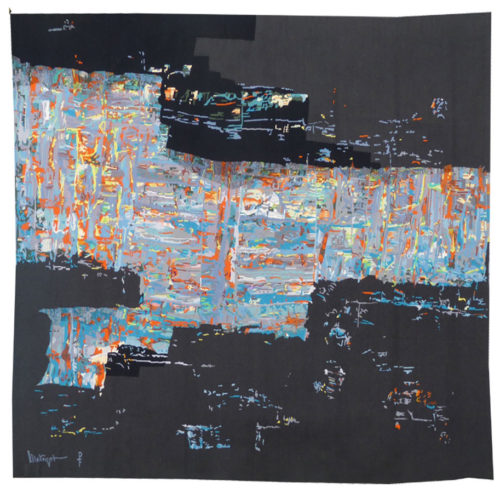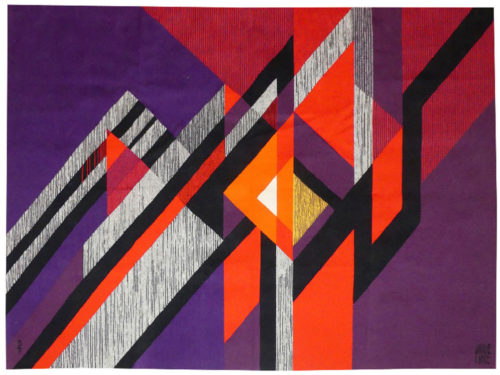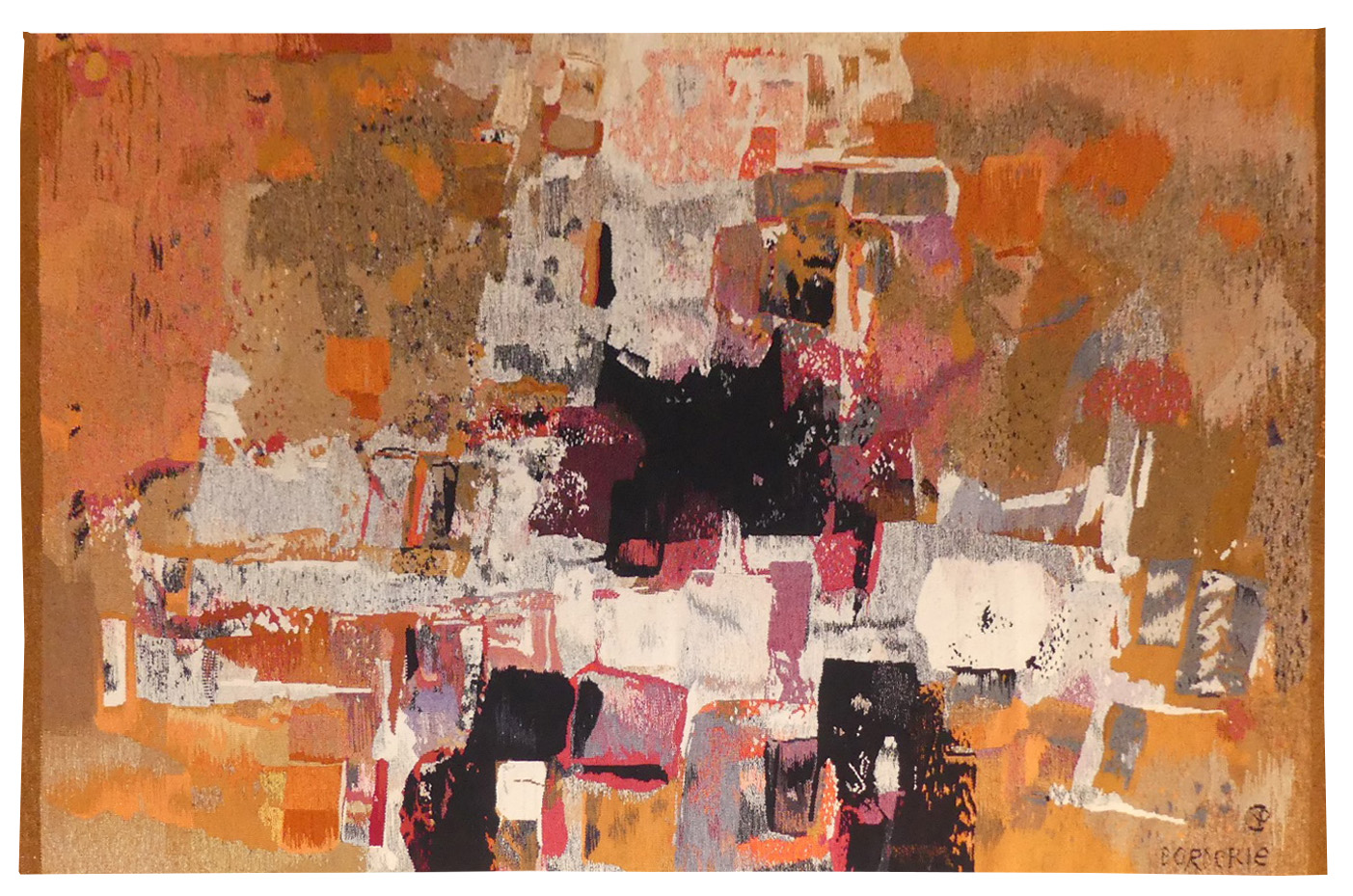Les armes de la lumière (weapons of light)
Tapestry woven in the Cauquil-Prince workshop.
With signed label, n°1/1.
Circa 1970.
Originally a sculptor exploiting very diverse materials (steel, concrete, clay…), Borderie came to tapestry with immense enthusiasm in the 1950’s with the weaving of his first cartoon in 1957. Receiving encouragement from Denise Majorel, he was awarded the Grand Prix National de la Tapisserie in 1962. In 1974 he was appointed as director at the Ecole Nationale des Arts Décoratifs at Aubusson but he resigned from this post shortly thereafter. He designed over 500 painted cartoons, abstracts using simple shapes, shading in a limited palette of colours and weaving with gros points.
‘At the centre of André Borderie's painted and woven work is light’ (F. de Loisy in Exhibition Catalogue André Borderie ‘pour l'homme simplement’, Angers, Musée Jean Lurçat et de la Tapisserie Contemporaine, 1998 p.7). This observation has manifesto value here, with concerns close to those of Matégot (cf. ‘Ombres et lumières’, ‘Piège de lumière’...).
Bibliography :
Exhibition catalogue André Borderie « pour l’homme simplement », Angers, Musée Jean Lurçat et de la Tapisserie Contemporaine, 1998
Exhibition Catalogue André Borderie et la tapisserie d’Aubusson, Aubusson, Manufacture Saint-Jean, 2018




